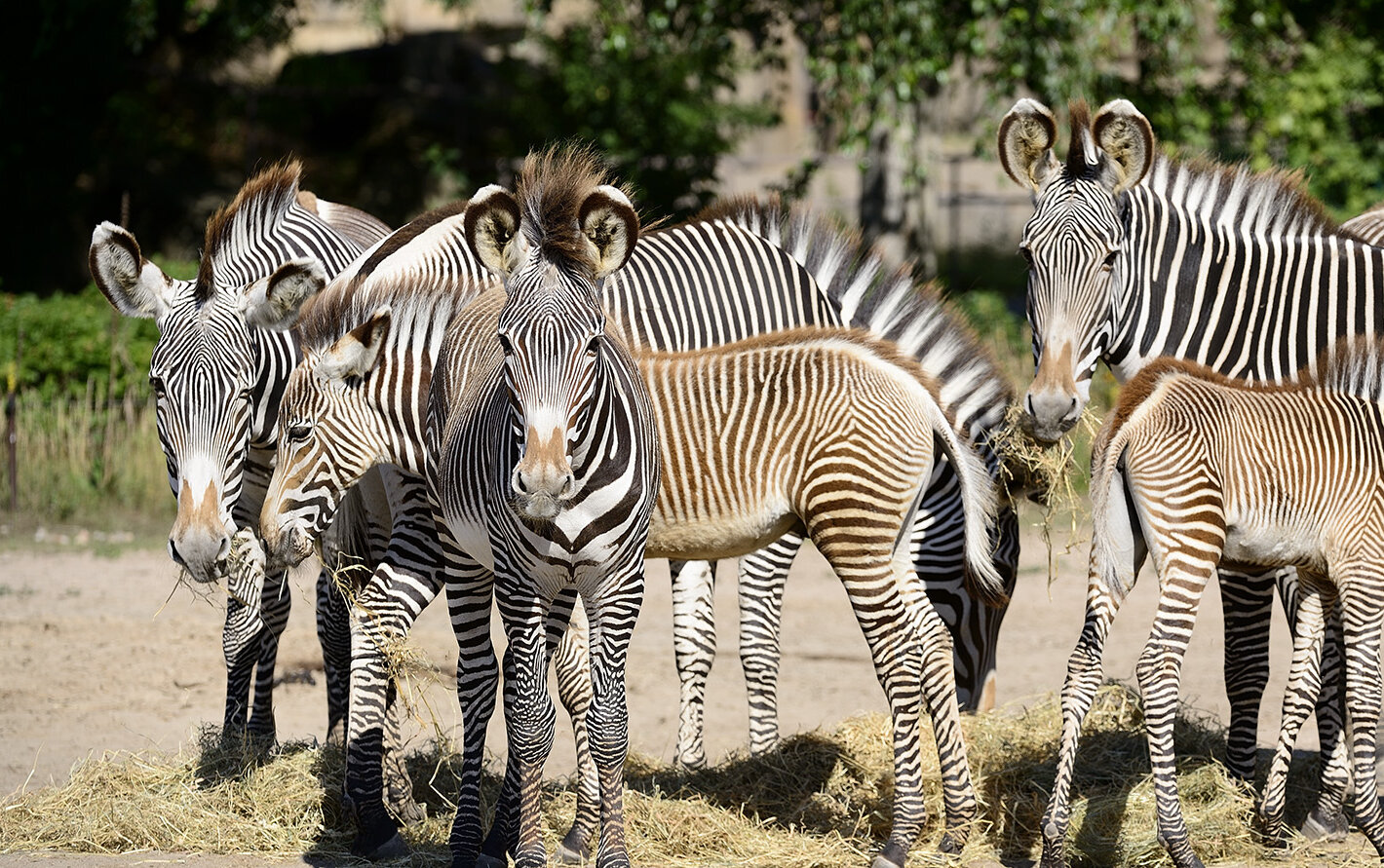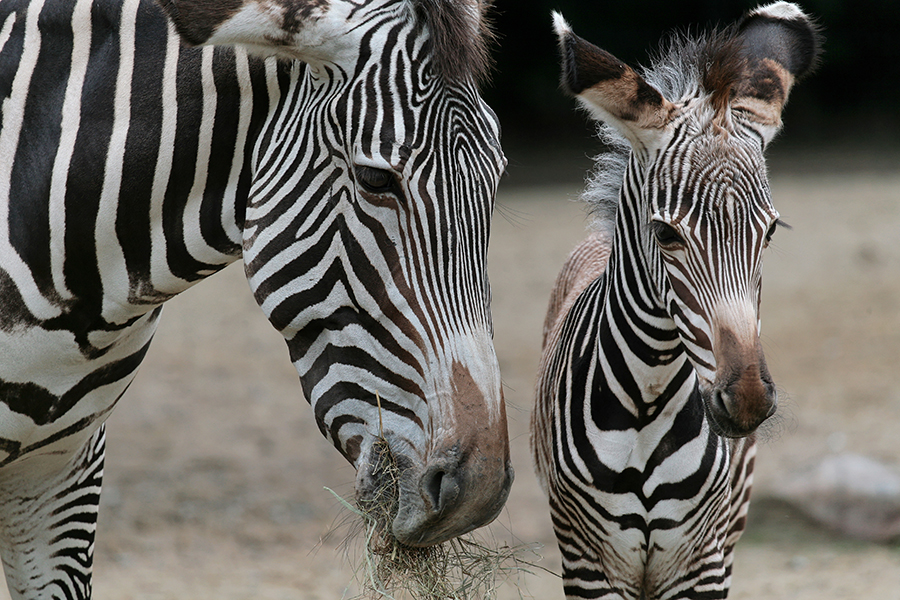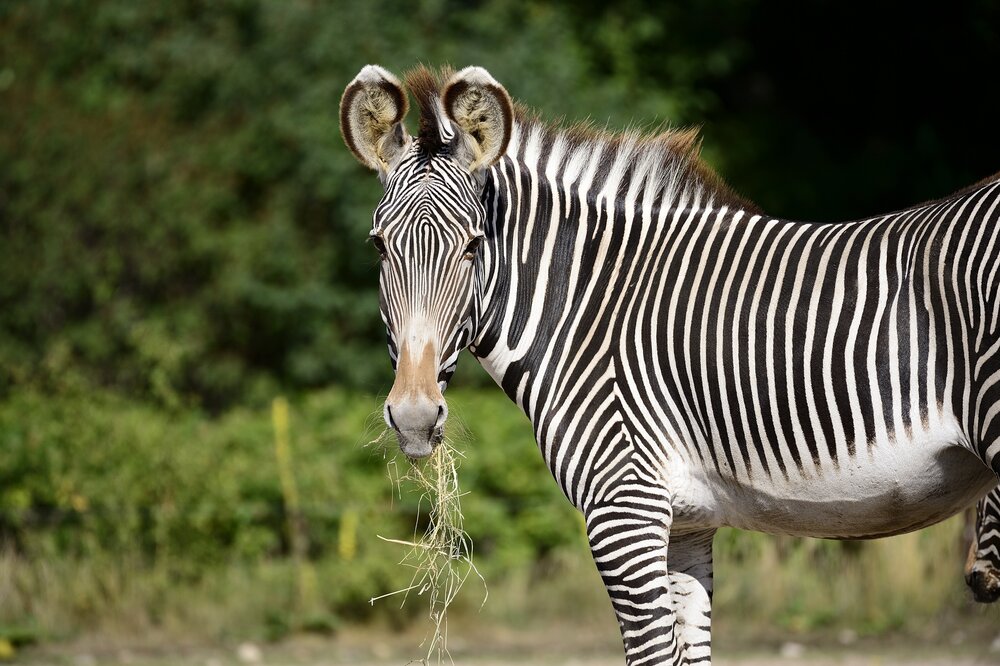
Grévy’s zebra
Zoo Berlin helped establish the “stripe database” project for monitoring individual zebras in Kenya.
Project facts
- Project name
Stripe-ID database for Grévy’s zebras
- Species
Grévy’s zebra (Equus grevyi)
- IUCN threatened status
Endangered(EN)
- Project location
Kenya
- Greatest threat
Habitat loss due to livestock farming; hunting
- Response
Improving the monitoring of individual zebras
Threat Categories of IUCN


Berlin earns its stripes
The Grévy’s zebra – which was once known as a “horse-tiger” – got its name in 1882, when the Emperor of Ethiopia presented French President Jules Grévy with one of the animals. Zoo Berlin has been home to zebras since 1881, but did not receive its first Grévy’s zebra until 1957. Compared to the two other zebra species (the plains zebra and the mountain zebra), Grévy’s zebras have distinctively large, round ears and narrower black stripes. Zebra stripes are just as unique as human fingerprints – no two patterns are the same.
At home on the Horn of Africa
Grévy’s zebras once inhabited the steppes and savannahs of East Africa. Their original habitat encompassed large areas of the Horn of Africa, from Kenya across Somalia and Ethiopia up to Djibouti and Eritrea. Today, however, they live only in Kenya and a tiny area of Ethiopia. In the 1970s, their population stood at more than 15,000, but now there are estimated to be fewer than 2,000 individuals of reproductive age living in the wild.
Competing with cattle
The Grévy’s zebra is categorised as “Endangered” on the IUCN Red List. The greatest threat to their survival is loss of habitat due to herds of livestock encroaching upon their territory and competing with them for food and water. In the 1970s, poaching for zebra hide was one of the main causes of the massive decline in the animals’ numbers. Today, poaching still represents the second greatest threat to the species – but now they are generally hunted either for meat or for medicinal or cultural purposes. Keeping regular tabs on population numbers is crucial for assessing the extent of the danger the species faces.
Animal bar codes
By keeping an eye on the number of individual Grévy’s zebras living in the wild, experts can quickly recognise and analyse any changes to their distribution. But counting these rare and shy animals is no easy task. Camera traps are generally the most successful method for observing, counting and “scanning” the zebras. Zoo Berlin joined forces with Marwell Zoo in England to create a complex database that can be used to identify individual zebras based on their unique stripe pattern. This database enables researchers to calculate the health and viability of the Grévy’s zebra population.
Zoos to the rescue
As well as supporting research into wild Grévy’s zebras, Zoo and Tierpark Berlin are protecting these rare animals in other ways. When the number of Grévy’s zebras in Africa dropped to a dangerous level, zoos from almost 30 different countries stepped in to create genetic reservoirs outside the animals’ natural habitat. There are now some 500 Grévy’s zebras living in more than 100 facilities around the world. The species’ international studbook is managed by Marwell Zoo. Thanks to concerted conservation initiatives, there has been a slight increase in the number of wild Grévy’s zebras in recent years.


